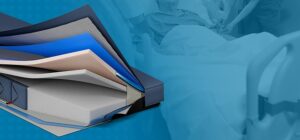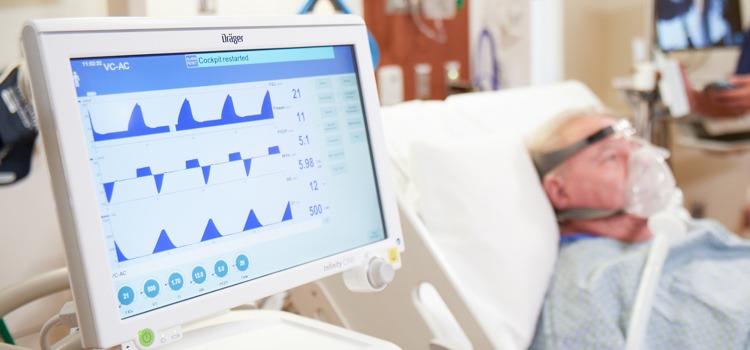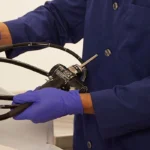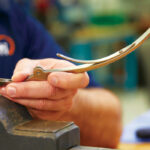For weeks now, healthcare providers have been working around the clock to combat the ongoing COVID-19 pandemic. Many hospitals witnessed firsthand the difficulty of securing vital clinical equipment needed for their critical patients. Even as census continues to ebb and flow with COVID cases across the country, alarming gaps in traditionally relied-upon healthcare supply chain networks continue to leave healthcare networks short of the resources they need.
As a result, hospitals have stretched their manufacturer and vendor partnerships to meet the top priority of ensuring critical movable medical equipment (MME) is ready for patient use. But while getting the equipment is one piece of the puzzle, it is important that the right safeguards are in place to minimize the potential for this high-demand MME itself from becoming an infection risk.
MME Can Disrupt Infection Prevention Efforts and Increase Risk
Hand hygiene remains a top concern in mitigating the spread of COVID-19 in clinical settings, but it’s just as important to focus on what hands touch. Ventilators, patient beds, infusion pumps and other MME are some of the most-touched surfaces by your clinical staff. On top of that, a single device or piece of equipment will be exposed to thousands of patients over its lifetime.
Even in normal circumstances, a recent study concluded that MME presents an infection risk “even with proper hand sanitization and personal protective equipment.” But these are not normal circumstances. Preliminary studies suggest that viable COVID-19 viral particles can be detected up to four hours later on copper, up to 24 hours later on cardboard and up to three days later on plastic and stainless steel surfaces.
In addition to the unique durability of COVID-19 on surfaces, surging MME demand, strained clinical resources, and the transmission qualities and heightened contagiousness of COVID-19 only heighten the infection risk presented by MME. Hospital staff are pressed for time, and without an efficient, effective and well-defined plan for cleaning MME, the risk to infection prevention efforts may grow.
Reinforcing Your Equipment Cleaning and Disinfection Procedures
The efficient reprocessing of MME between patients is a critical part of a hospital’s effective response to surge capacity. Now is the time for every hospital to rapidly evaluate their internal MME cleaning and reprocessing standards, beginning with the following questions:
- Do you have a defined and documented process to ensure and measure that MME is disinfected in between patient use every time? Leading hospitals have put in place processes and even tracking mechanisms to measure patient-to-patient transfer violations (a device moving directly from one patient room to another, without any cleaning, sanitization or reprocessing). They can use the metric to monitor that proper cleaning takes place and can identify areas of the hospital where equipment is not cleaned properly to provide training .
- Do you have a defined owner/dedicated staff available to manage reprocessing of your MME? Many hospitals today are dedicating specific roles to ensure their fleet of MME is consistently cleaned and disinfected. These defined roles and clear processes remove the shared responsibility from hospital staff (nursing, respiratory therapy, EVS, materials management, etc.). Undefined accountability means no accountability. Moreover, MME cleaning and disinfection adds yet another non-clinical task that pulls nurses and clinicians away from providing patient care — something hospitals simply cannot afford in the face of surge capacity.
- Do your MME cleaning procedures follow OEM recommendations? A best-practice for infection prevention is to follow OEM requirements and rigorous testing for correct contact times and cleaning solutions. Each equipment type has unique cleaning protocols, and to provide adequate protection against the spread of contagious agents (like COVID-19), it’s imperative that the right solutions are used for the right MME for the right amount of time.
Don’t Overlook the Quality and Safety of the Equipment Coming Into Your Hospital
With demand remaining high, hospitals have turned to any provider that can equip them with the MME needed to keep up with patient care. Some hospitals have looked beyond established partnerships with rental providers and manufacturers to other distributors, third parties and emergency stockpiles.
Access to this vital medical equipment is undoubtedly the priority. But the quality and safety of that equipment can’t be taken for granted. Third-party equipment represents an outside element entering your clinical environment — one that can present a significant safety risk if not handled properly. For your hospital to effectively rise to the challenges of surge capacity, all MME must be properly maintained, thoroughly cleaned, disinfected and patient-ready on delivery.
Does Your MME Third-Party Vendor Follow Rigorous Infection Prevention Standards?
Few hospitals thoroughly review the standards that their MME vendors use for reprocessing. The unfortunate reality is there is no regulatory standard for third-party providers, and procedures vary widely by the vendor. Now is a good time to take a hard look at the quality and cleaning procedures of your MME vendor(s):
- Does your MME vendor have documented cleaning and disinfection procedures following OEM requirements? These requirements are based on rigorous testing to ensure the correct contact times and dilutions/concentrations are used to kill certain infectious agents. They also ensure the chemicals used will not degrade the materials from which the medical devices are made.
- Does your MME vendor have cleaning procedures for every device in their fleet? There should be a process in place to ensure that the right procedures and chemicals are being used for the right devices — and that all devices are included.
- Is your MME vendor’s staff fully equipped to minimize infection risk? What policies and procedures are in place regarding personal protective equipment (PPE)? Are they trained annually on the latest standard for cleaning and infection risk?
- Does your MME vendor meet ISO standards? Which ISO standard? Rental providers can elect to implement/follow ISO standards — but it is not required. Moreover, there is a widening gap between the generic ISO 9001:2015 standard and the medical-industry-specific ISO 13485:2016 standard, which adds rigorous, patient-focused and risk-based requirements designed specifically for the high-risk medical device industry.
Responding to Equipment Challenges Posed by COVID-19
As healthcare workers, you and your teams are on the frontlines of this crisis. But you are not alone. Working closely and communicating with your third-party vendors early and often – about your needs and partnership expectations – can help minimize disruptions as your hospital faces surge demand.
Agiliti can rapidly scale up support and services to meet the unique challenges of the COVID-19 pandemic. And, as we plan for a new world beyond COVID-19, our teams are actively supporting healthcare providers nationwide to maximize the availability and readiness of necessary clinical equipment — including supplemental MME rental, supplemental biomedical staffing and onsite services. And in the face of this unique risk to the best-laid infection prevention plans, we are leveraging our longstanding compliance with ISO 13485 standards to ensure all Agiliti equipment is cleaned, disinfected and made patient ready.
For more information on how we are mobilizing for COVID-19 and beyond, please visit our FAQ resource page. For questions or additional assistance regarding how Agiliti can support your organization, please contact us today.









